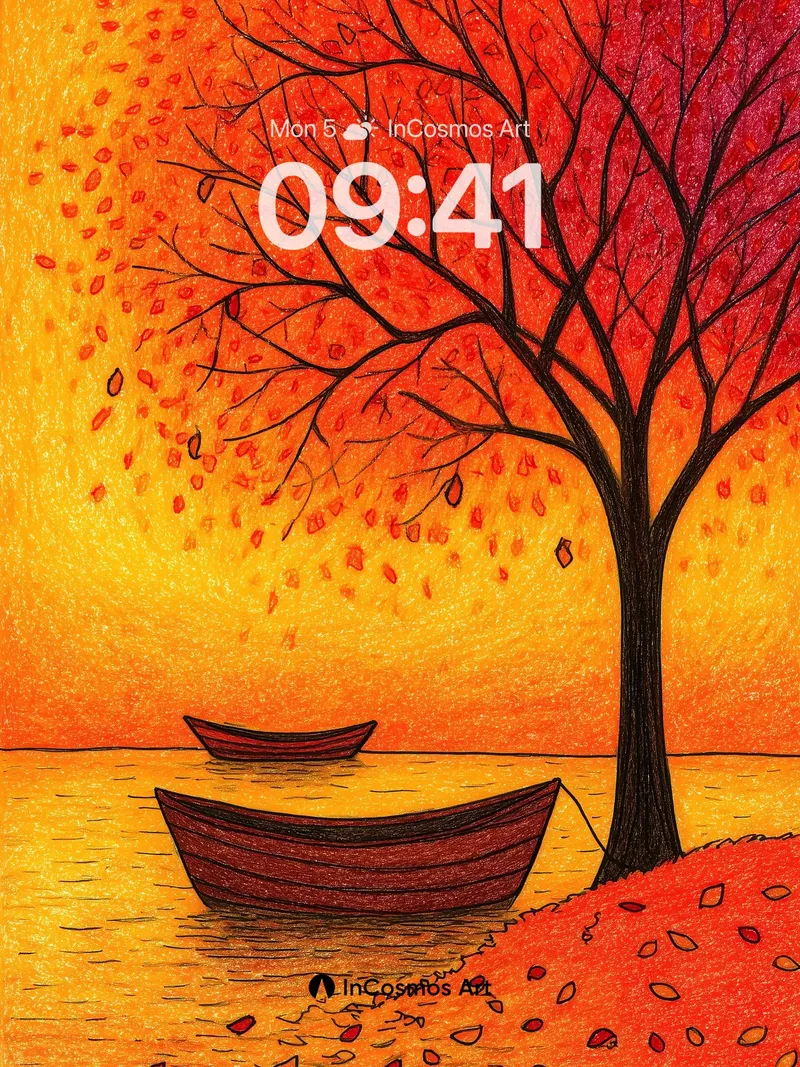The passage of seasons leaves traces in treetops, where leaves shift from green to gold, then deep brown, as if the earth is silently writing a parable about time. When wind stirs, foliage drifts like golden leaflets scattered across the world, blanketing winding paths. These trails do not lead anywhere specific—they invite attention to the breath of the present moment. Snow falls upon autumn branches, a natural paradox and layered memory—cold and warmth coexist, decay and abundance dwell together. City silhouettes emerge through the trees, marking the boundaries of modern life, while solitary figures on pathways suggest individual positioning beyond collective rhythms. A tower rises amid an orange-red forest, serving as both vantage point and object of observation. Humans here are neither masters nor visitors, but participants breathing with nature. A lone tree on a lake reflects perfectly in water, forming symmetrical beauty that also implies inner balance and wholeness. Two people sit together atop a cloud, floating in boundless sky, symbolizing emotional bonds transcending reality. These scenes collectively form a meditation on existence: finding constancy within change, sensing resonance amidst solitude.
Rhythms of Nature
The changing hues of trees are more than visual phenomena—they are the planet’s cyclical language. From blue to gold, then rust, each tone carries distinct energetic states. Blue signifies stillness and introspection, yellow embodies vitality and farewell, orange-red marks the final brilliance before burnout. This chromatic sequence is not random—it functions as an ecological signaling system. People walking through nature do not seek arrival; they participate in a grand narrative. Falling leaves release fragments of life, returning to the soil.
Solitude and Coexistence
Human figures appear in forest paths, lakeside, and clouds—all rendered small. Their presence is quiet yet profound. Solitude is not emptiness, but selective focus. When individuals step outside group rhythms, they hear internal voices. The two sitting on the cloud speak no words, yet their posture conveys unspoken understanding. This coexistence surpasses physical distance, pointing toward spiritual resonance. Before nature, humans are not central—they are one link in the universe’s structure.
Dialogue Between City and Wilderness
Urban skylines appear through autumn woods, revealing the juxtaposition of civilization and nature. Humanity builds towers but longs for forests. An observation tower stands at the forest’s heart—a human construct absorbed into the wild. It offers perspective, yet creates separation. People climb high seeking belonging. The order of cities contrasts with the chaos of forests, and humans stand between them, attempting reconciliation. This is not only spatial tension but psychological projection.


























